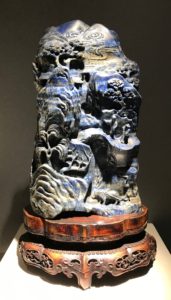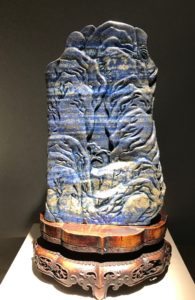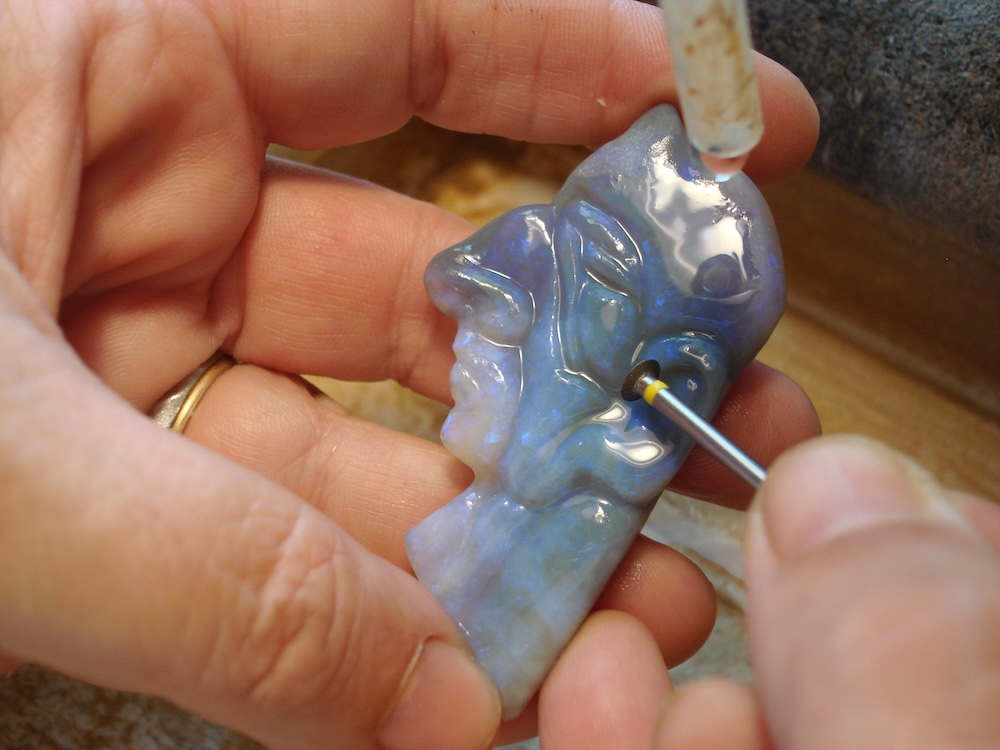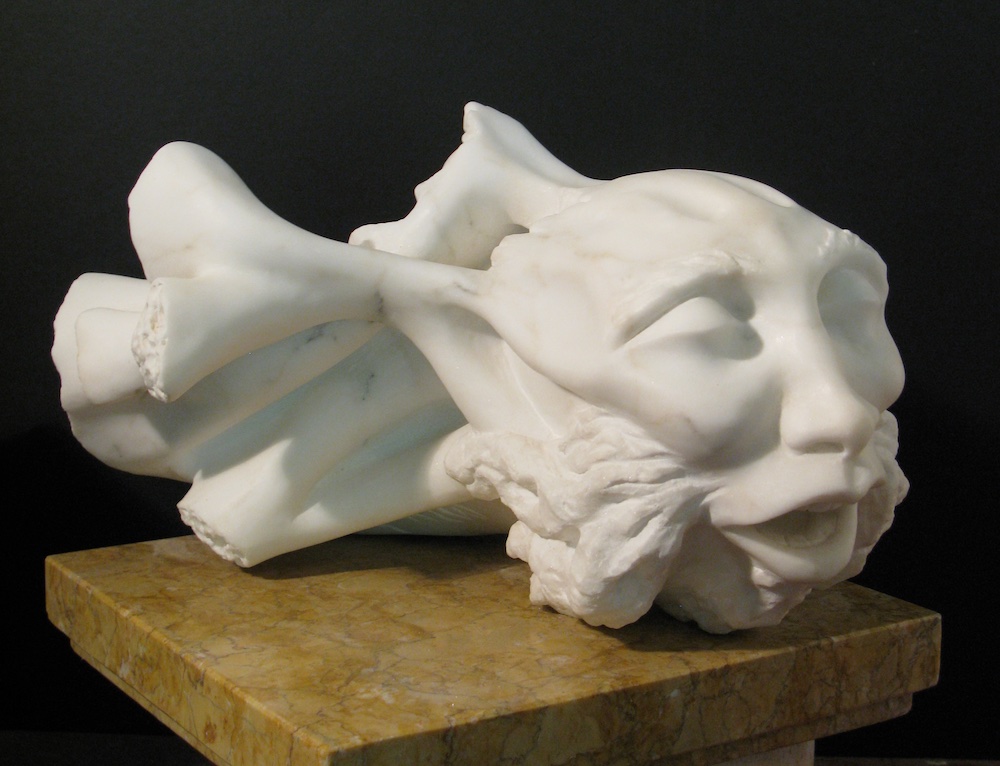Featuring an idealized mountain with a landscape scene, this carved stone or shanzi in Chinese is fashioned from a single piece of lapis lazuli, one of the few rocks that is a gemstone. Lapis Lazuli is formed through metamorphic processes and is comprised of varying amounts of three minerals: lazurite (blue), calcite (white), and pyrite (gold-colored) and can include other minerals. It has been used as a gem, ornamental stone and pigment for thousands of years. Lapis has been carved into artworks in China since the Han dynasty (206 BCE-22 BCE). During the Qing dynasty (1644-1911), the stone was further attached with ritual significance to represent heaven because of its blue color.

Using the shifting perspective typically seen in Chinese landscape painting, the lapidary artist cleverly adapted the continuous mountain scenery to the shape and colors of the variegated stone. The viewers’ “journey” starts from the bottom of the carving. An ox and a farmer are plowing the field at the foot of the mountain. A willow and a barren tree on the right lead our eyes to the middle section. A gentleman, right hand pointing forward, is showing the man behind him the way to a villa partially visible in the upper part of the mountain. A towering pine tree stretches its branches upward to the summit encompassed by floating clouds. This unique representational technique, different from the focal point perspective in Western pictorial art, breaks away from the restrictions of time and space and offers viewers an imaginative journey of the mind favored by traditional Chinese scholars.

W: 5 inches (12.7 cm)
This lapis lazuli carving rests upon an exquisitely carved two-layered wood stand. The bats, symbol of happiness, atop of the legs are rendered into abstract forms. A narrow band of geometric patterns on the bottom rim of the upper layer is an imitation of the cloud design often-seen on early ritual bronzes.
In traditional China, this type of stone carvings was usually displayed either on the tables or shelves in an educated elite’s study room.










